Original URL: https://www.theregister.com/2014/04/22/review_oppo_n1_cyanogenmod_edition_android/
A premium smartie lump: Oppo N1 CyanogenMod Edition
Monster phablet rooted at the factory for your pleasure
Posted in Personal Tech, 22nd April 2014 09:01 GMT
Review While most Chinese smartphone OEMs started life making cheap tat and then slowly began moving upmarket, Oppo has taken a slightly different tack. Its devices have been fairly high-end from the get-go and the N1, initially released running Android 4.2 back in September 2013, made quite a splash.

Oppo N1 CyanogenMod Edition
Now the N1 can be bought with a factory-fitted CyanogenMod ROM, combining Oppo’s highly individual hardware with what, by general agreement, is the best community Android ROM currently available. Sort of a CyanogenMod Nexus device, then.
Hardware first. If you like small smartphones, look away now because the N1 is a bit of a monster. Granted, it has a 5.9-inch screen so it was never going to be petite, but the only phablet that’s larger (albeit much thinner) is Sony’s Z1 Ultra, and that boasts a 6.4-inch display.
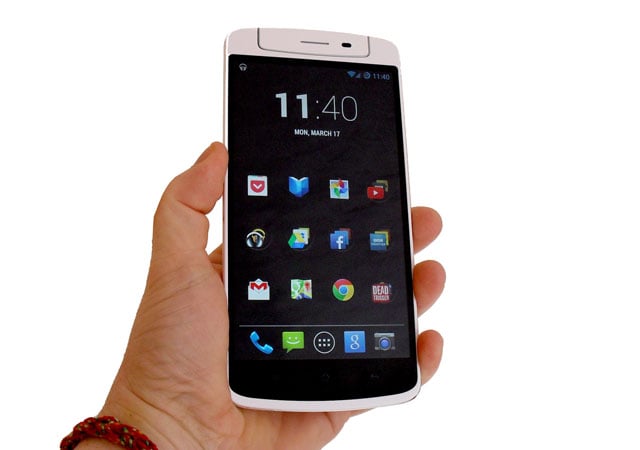
You'll need the hand span of Rachmaninov to get a good grip on this phablet
Measuring up at 171 x 83 x 9mm and weighing 213g the N1 makes the Samsung Galaxy Note 3 look like a child’s toy, and that despite the Note only giving away 1/5-inch in screen size. Slip the N1 in your suit jacket pocket and you will come over a bit Quasimodo.
Like most large phablets, the N1 is a challenge to use with one hand. I’ve got fairly small hands, so that reaching the far edge of the screen with my thumb was often impossible. On the positive side, the volume and power buttons are well placed, while on the back you’ll find a 40 x 30mm touch pad called O-Touch which you can use to scroll the display. It’s certainly handy if you want to shuffle down a web page or flip through a picture album without your finger getting in the way.
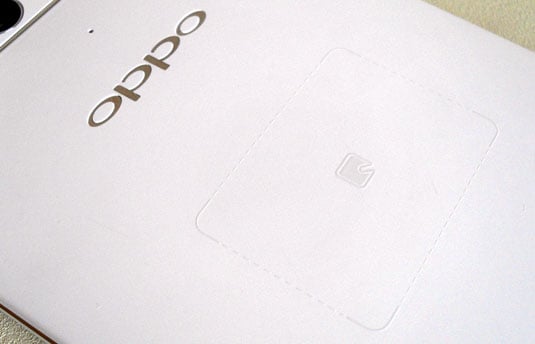
Blink and you'll miss it: the O-Touch touchpad makes an understated appearance on the back
The N1’s 1080 x 1920 display is rather a good one, and viewing photos on it is a delight. It’s vivid, bright and supports very broad viewing angles. This IPS panel is close to the top of the class and thanks to its 373ppi pixel density, it’s as sharp as a tack. The panel is rather reflective though, so performance in direct sunlight is no more than average. That’s its only failing.
The N1’s bulk isn't just down to design waywardness. It is a very solid and well made lump and has a premium feel to it. That’s just as well in one particular area: the camera. Rather than having two – front and back – the N1 makes do with one 13Mp snapper fitted into a rotating housing at the top of the device.

A camera with a twist: it even works at half rotation
It’s a design that may give some potential purchasers pause for thought, but the hinge feels very well engineered. Oppo reckons it has been tested without failure to 100,000 swivels – that’s five a day, every day for more than 54 years.
The camera is a solid performer too. In daylight it takes richly coloured and highly detailed images, while at night the dual-LED “flashes” and the slow shutter option produce some pretty impressive results.

The swivelling camera makes the most of the megapixels for selfies
The ability to take 13Mp selfies should provide sufficient instant gratification to have the N1 personally recommended by irredeemable narcissists everywhere. Low light photography is further helped by a curious little gadget that comes bundled with the N1 called O-Click
Alarming consequences
The O-Click is a little Bluetooth button that can act as a remote shutter command, thus reducing camera shake. It has a handy little metal loop around it so you can attach it to your car keys as it also functions as a proximity alert. So when you walk off leaving your phone behind it can fire up the phone’s alarm remotely, though how you’d lose something as large as the N1 is beyond me. The O-Click’s functionality can be tuned in the phone’s Settings menu, if you just want it to perform some - or none - of those tasks.
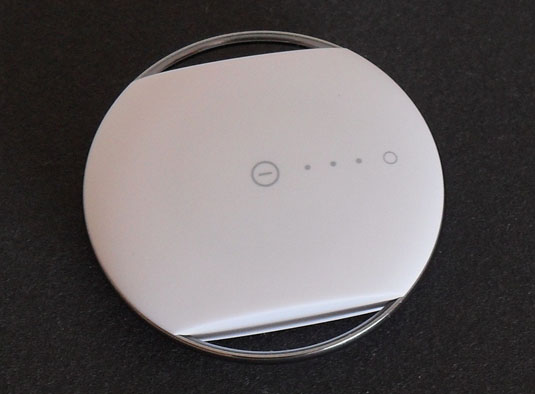
The O-Click helps minimise separation trauma
Internally the N1 is rather less impressive. To start with, it’s a 3G rather than 4G/LTE handset and the chipset is a Qualcomm Snapdragon 600 component that couples a quad-core 1.7Hz Krait 300 processor with an Adreno 320 GPU.
While more than powerful enough, it’s not in the same league as the Snapdragon 800 chipsets now found in some Android flagships, let alone those looming on the horizon with the new 801 chipset. On a more positive note, the N1 packs a healthy 2GB of RAM.
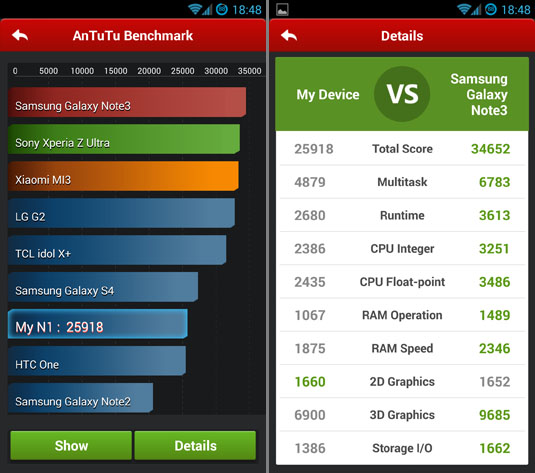
AnTuTu test results and Galaxy Note 3 comparison
Storage is a wee bit off the pace too. The standard N1 is available in 16GB and 32GB flavours but the CyanogenMod device seems to be 16GB only, and that is divided up old-style into ‘System’ (2.95GB) and ‘SD Card’ (9.8GB). There’s no memory card slot, which will turn off many potential buyers and Reg readers alike. All is not lost though, as the microUSB port does support On-The-Go hosting. Unfortunately it doesn't support MHL media output so you’ll need to use a wireless alternative. There’s no infra-red transmitter, either.
Turning to matters of power, the N1’s fixed battery is a sizeable 3,610mAh affair that proved good for eight and a half hours of 1080p MP4 video playback. In more general use you should see the thick end of two full days from a charge, depending on how hard you ride it. Just to round off the technical specification, the N1 has an NFC chip and comes with Bluetooth 4.0.
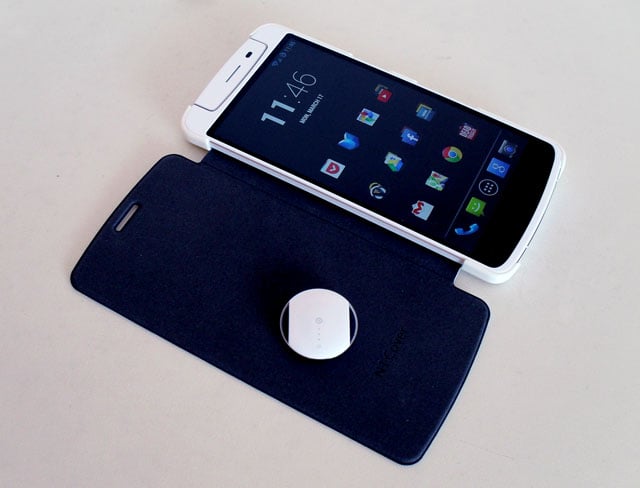
Flip cover is supplied free in the package along with the O-Click
Currently the N1 CyanogenMod Edition runs CyanogenMod 10.2 which is based on Android 4.3. An OTA update to CyanogenMod 11 which is KitKat-based is apparently due soon and it’s probably safe to assume that, moving forward, updates will arrive faster than on any other handset not carrying a Nexus badge.
Both Oppo and CyanogenMod have said that they see this partnership as a long-term affair.
My review device arrived in an impressive retail package complete with a nifty flip cover and surprisingly good earphones. It was already rooted, too, which is one hoop fewer to jump through if you want to start messing about with the operating system.
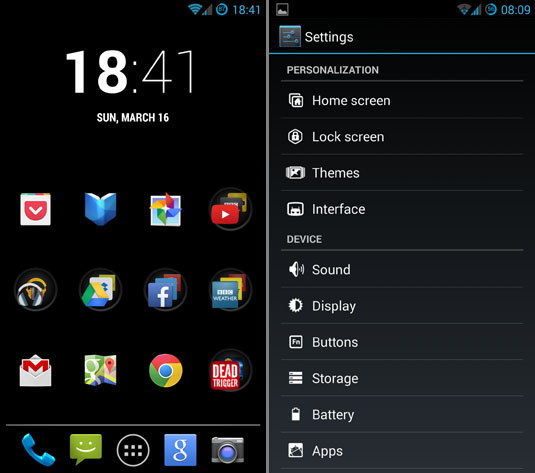
CyanogenMod Trebuchet launcher and menu options
Fronting the operating system is CyanogenMod’s own Trebuchet launcher. It looks much like stock Jelly Bean but is massively more user-configurable, with pretty much every aspect of the UI open to being mucked about with. Want more docks? Want to remove the app and folder names from the home screen? Want to install new themes? Want to change the quick settings menu? Want gesture control? It’s all there for you to play with.
Secret service
Other third party and OEM launchers offer similar features but none offer quite this range of options. Nor do they look, feel and work so much like stock Android while offering them.
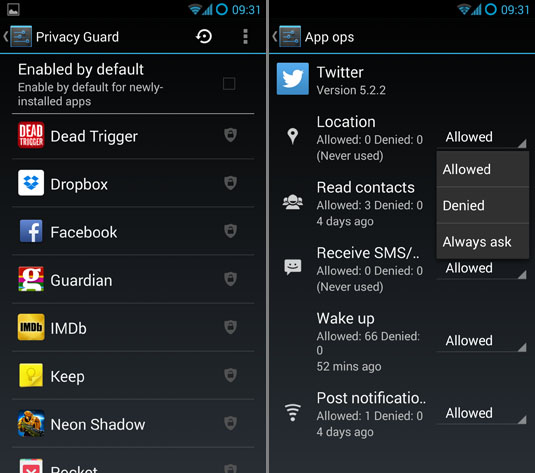
Privacy Guard enables customisation of app privileges
There’s more to CyanogenMod than nifty aesthetics, though. Privacy Guard is probably the most important additional feature. This lets you see what information your apps have access to, enabling you to make modifications and restrict access as desired.
Also baked into the operating system is a profiles selector: a call and SMS blacklist that lets you block private, unknown or user defined numbers, or any combination thereof. There’s WhisperPush too, that provides encryption of your SMS messages.
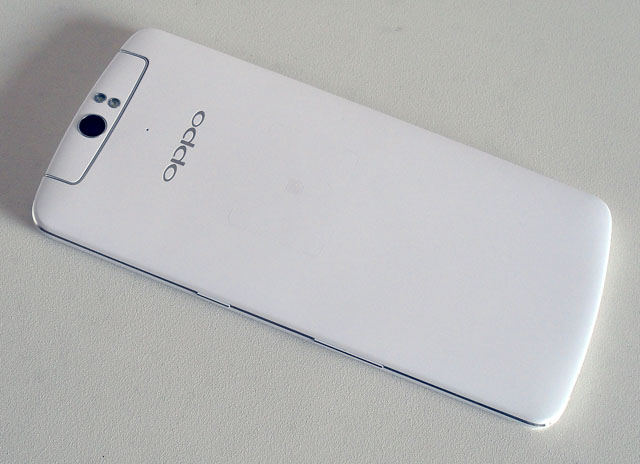
The styling at the back is decent enough
You can also tie your device to a CyanogenMod account for remote wiping and locating in case of loss or theft. As with Trebuchet’s features, these functions can be added to most Android devices using third party apps but having them built into the OS is still a boon.
Meanwhile, app bloat is noticeable only by its absence. All you get is the Apollo music app, the longtime CM stalwart DSP Sound Manager and a file manager – which is decent enough but no match for the likes of Solid Explorer.
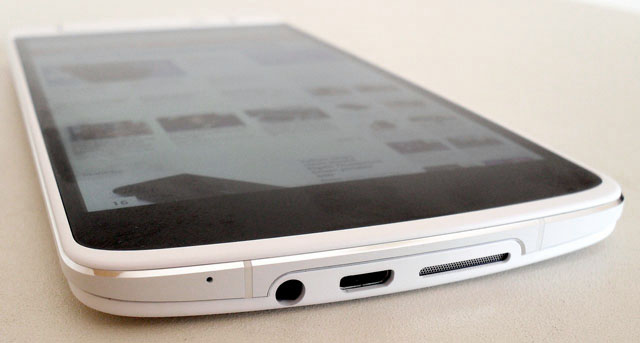
Speaker and microUSB port that supports OTG but not MHL
Features aside, during two weeks of daily use the CyanogenMod ROM didn’t once go pear-shaped and proved every bit as reliable and stable as a stock Android. I didn’t really expect anything else – the lads and lasses at CM having a good track record in such matters – but it’s worth being explicit on this matter.
Beyond system stability in everyday use I have to profess myself pretty impressed by the N1. Call quality was excellent with incoming calls sounding notably clear and loud. Signal reception was good too, both from the cellular radio and the dual-band 802.11n Wi-Fi. The single speaker built into the bottom edge of the N1 was also pretty impressive, loud and composed.

Putting things in proportion: Oppo N1 (left) and Moto G (right)
The Reg Verdict
So, is the Oppo N1 CM Edition a compelling alternative to Samsung’s Note 3? No, not really. It’s much bigger and heavier, has a fixed battery, a less advanced chipset, no LTE connectivity and no storage expansion. Yet despite those failings, I found myself rather liking it.
Size aside, it’s a very well made and stylish device, has some genuinely clever features like the O-Touch touchpad and rotating camera. CyanogenMod’s take on Android offers also some concrete advantages over a stock device. The screen is good, too, and don’t forget the O-Click remote – it’s less than essential but more than a gimmick. Herds can be great things – ask any wildebeest – but thank heavens for the likes of Oppo, so we don't all have to follow one. ®
Thanks to MobiCity for the loan of the Oppo N1 CyanogenMod handset.